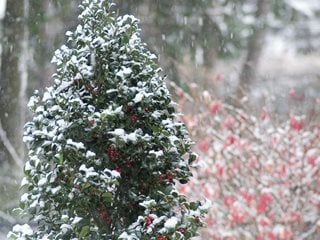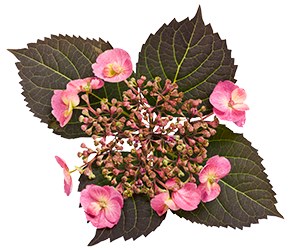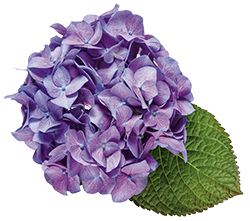HOLLY BUSH: HOW TO GROW & CARE FOR HOLLY
Enjoy Christmas cheer all year long with these favorite shrubsHolly is most commonly associated with the Christmas season, the branches and berries a favorite component of holiday decorations. Though holly shrubs provide four-season interest, it’s during winter when they really shine. The brightly colored berries stand out against the snow, adding beauty to the winter landscape.
With so many forms and sizes to choose from, there’s a variety suitable for every landscape need, from containers to mass plantings. Most garden cultivars are tolerant of a wide range of growing conditions, making them an invaluable addition to any yard.
On this page: Basics | Types | Planting | Care | How to Choose the Right Holly | Varieties | Landscaping Tips
- BASICS
- TYPES
- PLANTING INSTRUCTIONS
- HOLLY CARE
- HOW TO CHOOSE THE RIGHT HOLLY
- HOLLY VARIETIES
- HOLLY LANDSCAPING TIPS
BASICS
Type:
Tree, shrub, or vine
Zones:
3-10, depending on variety
Height/Spread:
Upright, mounding, spreading, columnar, pyramidal, or weeping habit, 1-1/2 to 80 feet tall and 1-1/2 to 50 feet wide
Exposure:
Full sun to partial shade; berries are most prolific in full sun.
Bloom time:
Spring to early summer
Foliage:
Evergreen or deciduous foliage occurs in shades of green, blue-green, gold, or variegated. Leaves are oval or elongated, from 1/2 inch to several inches long, ranging from thick, leathery forms with spiny margins, to tiny, smooth leaves that resemble boxwood.
Flowers:
Small, cup-shaped flowers bloom from spring to early summer and are most often creamy or white.
Berries:
Firm, rounded, berries in shades of red, orange, yellow, pink, blue, black, or white are produced in autumn and last through winter. The fruit is a source of food for songbirds and other wildlife.
Do all holly plants produce berries?
Nearly all varieties are dioecious, meaning male and female flowers occur on completely separate plants. This means that female plants, which produce berries, need to be sited near a male pollinator in order to bear fruit. One male is sufficient to pollinate 5 females, and should be sited within 40 feet of female plants. It’s essential that plants bloom at the same time, so many cultivars are sold as male and female counterparts such as Mr. Poppins® and Berry Poppins®.
Toxicity:
Holly contains saponins, which are mildly to moderately toxic if ingested. While all parts of the plants are poisonous to people and pets, it’s the attractive berries that are most often consumed. See more common poisonous plants.
2020 Landscape Shrub of the Year:
TYPES
With more than 400 species, hollies are one of the most diverse groups of plants. This tree, shrub, or woody vine—which can be deciduous or evergreen—is native to tropical and temperate zones across the globe.
There are 6 main types of holly:
- Winterberry (Ilex verticillata)
- Inkberry (Ilex glabra)
- Japanese holly (Ilex crenata)
- Yaupon (Ilex vomitoria)
- English holly (Ilex aquifolium), invasive in many places
- Blue holly (Ilex x meserveae)
Learn more about the different types of holly bushes.
PLANTING INSTRUCTIONS
When to plant:
Plant during milder months of spring or fall to avoid heat or cold stress.
Where to plant:
Choose a sunny to lightly shaded site with fertile, well-draining soil that will stay evenly moist.
How to plant:
Dig a hole 2 to 3 times wider than the root ball and not quite as deep. Remove plant from container and gently tease out roots or slice the root ball in several places if potbound. Mix compost into the planting hole. If soil pH is alkaline or neutral, add bark, wood chips, or peat moss to the backfill to increase acidity. Place the plant in the hole so the top of the root ball is slightly above or level with the soil surface. Fill in the hole, tamp down soil around the base, and water well. Mulch with 2 to 3 inches of organic matter to conserve moisture and suppress weeds, but not not cover the top of the rootball.
Plant spacing:
Depends on the variety.
HOLLY CARE
Pruning:
Hollies look best when allowed to retain their natural shape and size, though some types lend themselves to shearing into formal hedging. Pruning needs vary according to species and type. See more on how to prune holly.
Soil:
Hollies prefer loamy, well-draining soil that’s kept evenly moist, with an acidic pH between 5.0 and 6.0. Alkaline soil can cause yellowing of the leaves. To increase soil acidity, add aluminum sulfate or mulch around plants with peat moss or pine needles.
Amendments & fertilizer:
Use a slow-release fertilizer that is formulated for acid-loving broadleaf evergreen shrubs such as camellias and rhododendrons. Some manufacturers produce fertilizers specifically for hollies. Apply in spring and again in fall according to package instructions.
Watering:
Most hollies perform best with a moderate amount of water to keep soil evenly moist. Irrigate thoroughly once or twice a week during dry or hot spells in summer.
Diseases and pests:
When planted in optimal conditions, hollies are generally free of major problems. Possible diseases include root rot, leaf spot, leaf rot, tar spot, canker, and powdery mildew. Insect pests include holly leaf miner, bud moth, nematodes, spider mites, whitefly, or scale.
Deer resistance:
Holly is often listed as deer resistant, but some are more resistant than others. Those with spiny leaves tend to be left alone. Winterberry and inkberry are also less bothered; while blue holly and Japanese holly are more susceptible to grazing. See more deer-resistant plants.
HOW TO CHOOSE THE RIGHT HOLLY
It’s crucial to choose holly varieties that will not outgrow the space they’re planted in. The exception being cultivars that are grown primarily for foliage, which can be kept sheared to size. Here are some tips to consider when selecting hollies for your yard:
For borders and landscapes:
Choose varieties that will fit the scale of your landscape. Use as hedging, screening, in a mixed border, as foundation plantings, in naturescaping, or a stand-alone focal point. Allow room for plants to mature without becoming crowded.
For slopes and hillsides:
Select groundcover or dwarf varieties suitable to the size of your property and mass along a slope or hillside for erosion control.
For containers:
Dwarf types will stay smaller and are less likely to overwhelm a space. Plant in a medium to large container and combine with small perennials, ornamental grasses, or groundcovers for year-round interest.
HOLLY VARIETIES
HOLLY LANDSCAPING TIPS
There are many ways to incorporate holly into your landscape. Here’s how:
- Combine a small or medium-sized evergreen type with other evergreen shrubs along the front of your home. Decorate the shrubs with holiday lights for the whole neighborhood to enjoy.
- Place a colorful ceramic container near your home’s entryway and plant with a smaller specimen. Add decorations and small twinkling lights for a festive look.
- Plant a dwarf type as a hedge along a pathway and keep it sheared to create formal structure in transition areas.
- Naturalize evergreen or deciduous forms with especially showy berries in a woodland border that can be enjoyed from a cozy window inside your home. Add other plants with winter interest such as witch hazel and hellebores for an inspiring view that will help stave off the winter blues.
- Mass a dwarf or groundcover type along a bank or slope for erosion control.
- If you plan on regularly using the berries and branches for holiday decorating, make sure that plants are easily accessible for harvesting. Choose a site close to your home or driveway that won’t be blocked by snow.
Last updated: November 6, 2020
RELATED:
Shrubs 101
Evergreen Shrubs for All-Season Interest
Small Evergreen Shrubs
Best Evergreen Trees for Residential Gardens
15 Best Shrubs for Privacy














